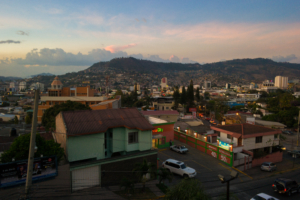Successful Development Projects in Honduras

Poverty remains an issue in Honduras, but it is making progress in rural infrastructure development, education improvement and agriculture income growth. As reported in 2017, Honduras has a poverty rate of about 52 percent, partly due to slow economic development, extreme violence and political corruption. Those in poverty rely heavily on outside aid from the World Bank, the U.S. and various non-governmental organizations (NGOs). Thanks to the World Bank and its partners, major development projects in Honduras were successful, such as the Social Protection Project and the Rural Infrastructure Project. Progress is currently ongoing to reduce poverty, develop the Honduran economy and improve life for those in poor rural areas.
Social Protection Project
The Social Protection Project cost $77 million, began in 2010 and ended in 2018. Although poverty reduced from 65 percent in 2005 to 52 percent in 2017, poverty remains an issue and is one of the main reasons for Hondurans fleeing the country. One major effect of Honduras’ poverty is parents taking their children out of school and having them work to help the household earn a sufficient income. Since income is low, poor Hondurans often cannot afford quality health care.
Malnutrition in children under 5 was 43 percent for those in poverty and school enrollment for ages 12 to 14 was 65 percent. To combat this, the World Bank and Honduras worked together to improve education and health care. At the end of the project, school attendance increased by 5 percent for 6 to 17-year-olds and school enrollment increased by 5 percent. Child labor reduced by 2.6 percent and about 50 percent of the recipients from 0 to 23 months of age received vaccinations. More than 300,000 families benefited from the Social Protection Project. Conditional cash transfers helped reduce poverty for those who participated in the project, which granted monthly income to the extreme poor.
Rural Infrastructure Project
The Rural Infrastructure Project began in 2005 and ended in 2016. Most roads in Honduras are unpaved and about 16 percent of people in rural areas lack a clean drinking water source, which increases the risk of contracting diseases. Also, about 22 percent of sanitation facilities remain unimproved and 30 percent of those in rural areas lack electricity. The Government of Honduras worked with the World Bank to improve its lagging infrastructure because of this. The project benefited more than 300,000 households.
Among many other infrastructure improvements, the project resulted in installing 4,893 latrines and constructing 113 water and sanitation projects. The project improved more than 413 miles of roadways and financed more than 8,550 rural electrification projects, with most of the electricity powered from solar photovoltaic energy. The project also improved more than 500 miles of power lines, which made it easier to develop remote areas of Honduras such as the slums in the western part of the country.
U.S. Involvement
The U.S. is one of the main donors to Honduras. Through the Millennium Challenge Corporation (MCC), the U.S. grants aid to those in need of foreign assistance. The U.S. Congress created the MCC in 2004 with strong bipartisan support. The MCC spent more than $200 million in infrastructure and agriculture improvements through four major projects in Honduras from 2005 to 2010. Some of the results include more than 350 miles of rural roads improved and paved. The biggest result was increasing monthly agriculture income by $3.50. The increase in income might seem small, but not for those in poverty, especially Hondurans who live in extreme poverty, off of less than $2 a day. For reference, the middle-income country poverty rate is around $5.50.
Poverty is slow to decline in Honduras, yet successful development projects in Honduras show improvement in other areas. Infrastructure is improving through the help of the U.S. and the World Bank. Poverty declined gradually from about 65 percent in 2005 to 52 percent in 2017. Development projects in Honduras in rural areas, such as through electrification, education and health care improvements and road construction shows promise for improving livelihoods for Hondurans in poverty.
– Lucas Schmidt
Photo: Flickr
